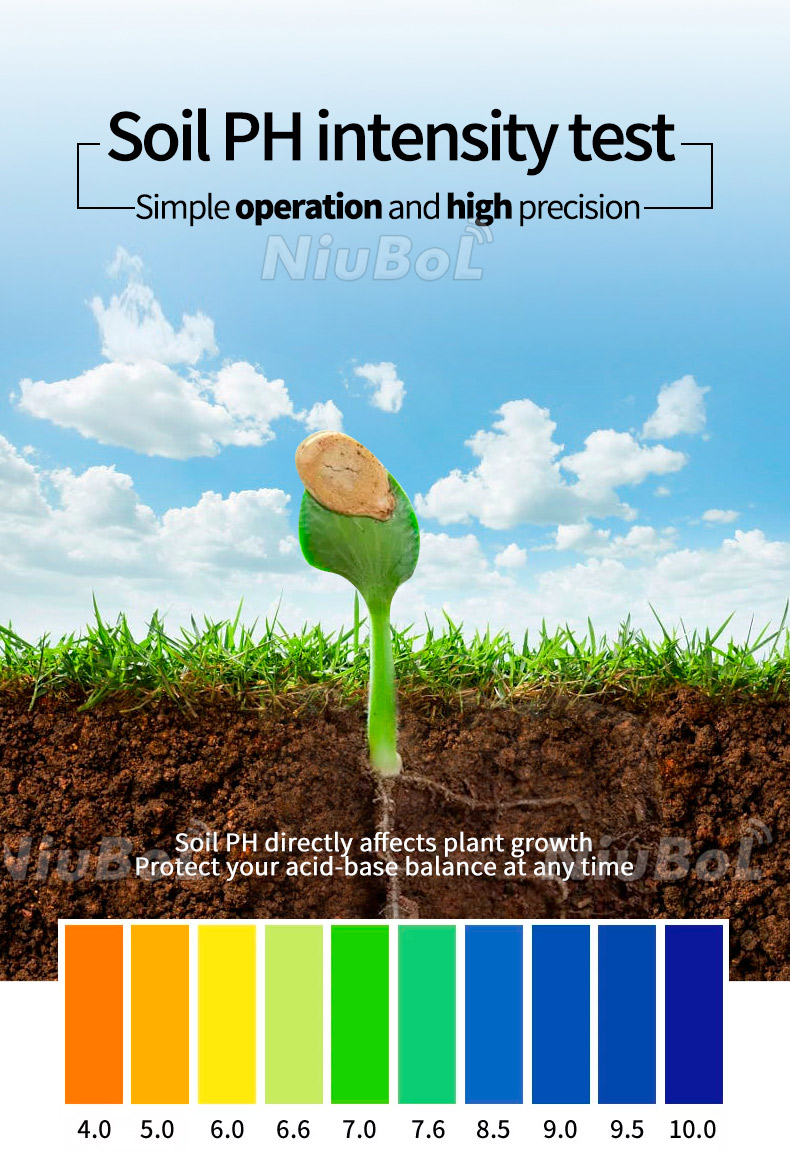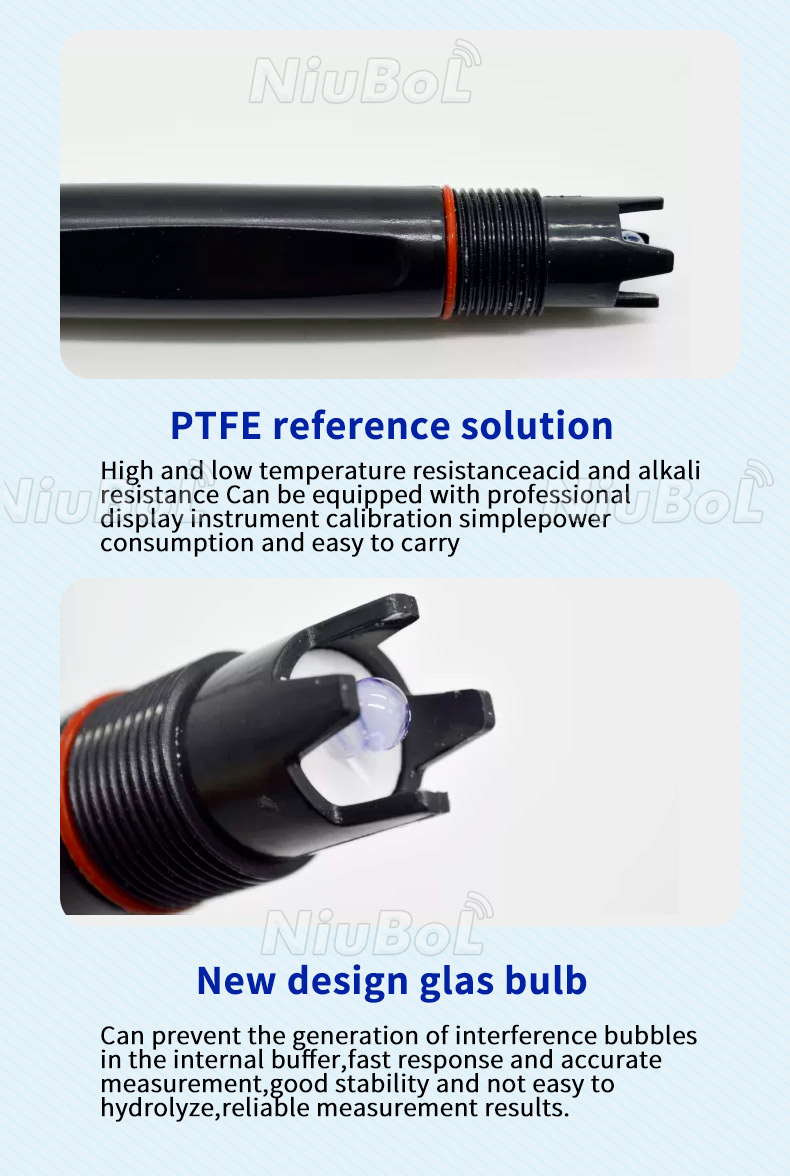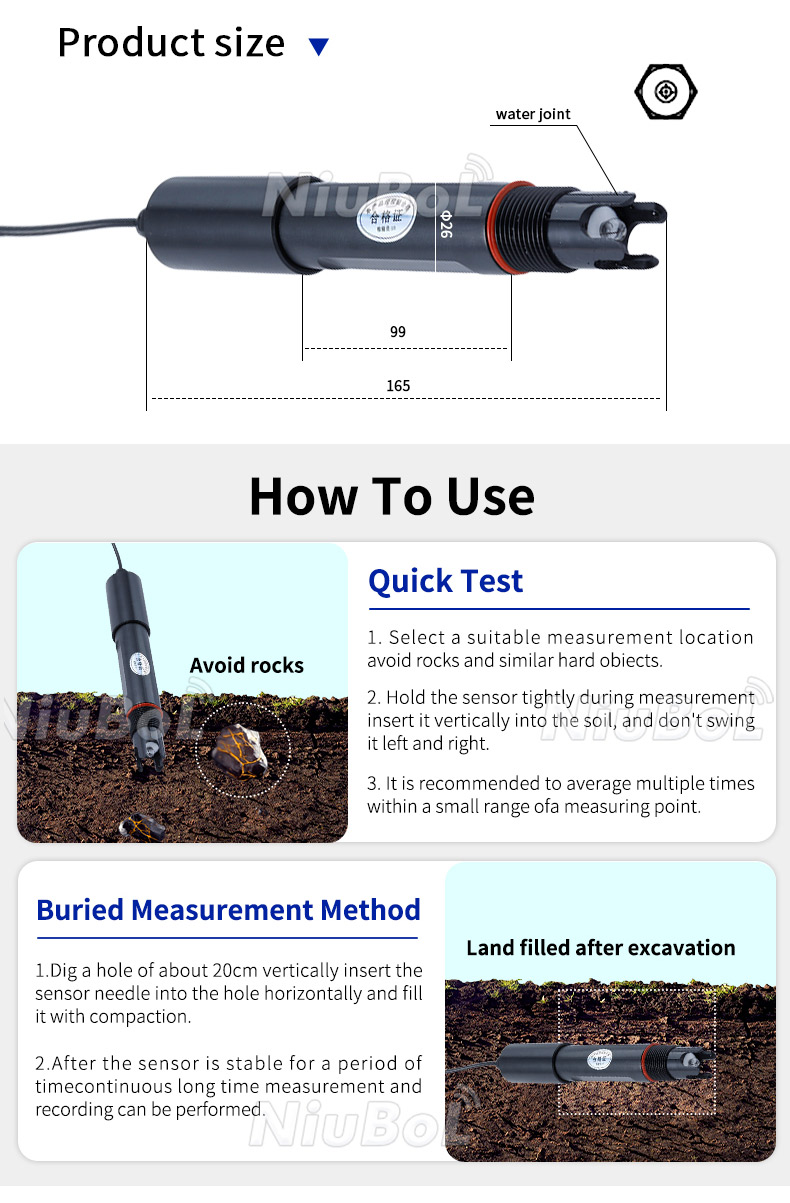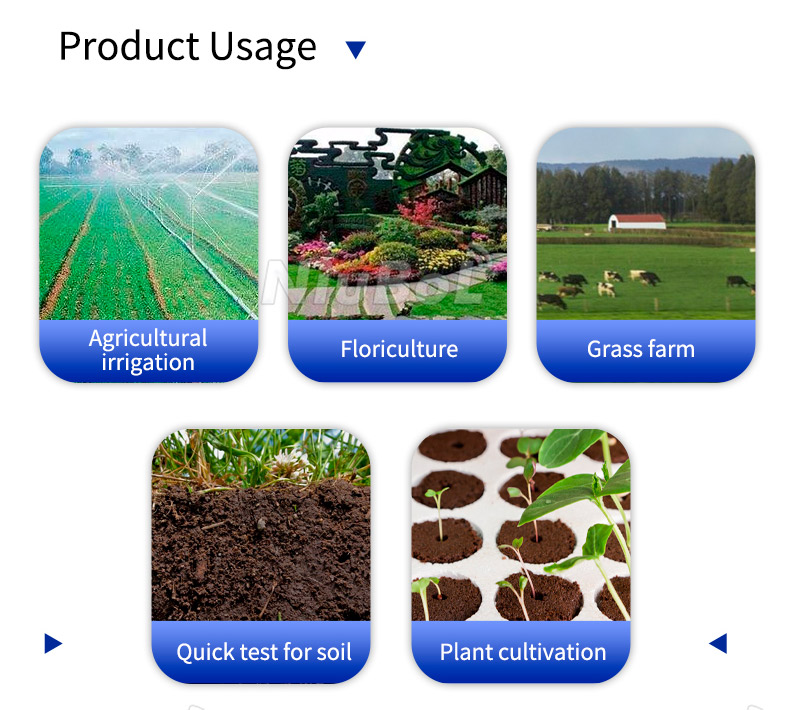

— Blogs —
—Products—
 Consumer hotline +8618073152920
Consumer hotline +8618073152920 WhatsApp:+8615367865107
Address:Room 102, District D, Houhu Industrial Park, Yuelu District, Changsha City, Hunan Province, China
Technical Support
Time:2023-09-13 15:42:55 Popularity:1998
Soil pH Sensor Introduction:
A soil pH sensor is an instrument designed to measure soil pH. It can quickly and accurately measure pH in the soil, providing farmers with real-time It can quickly and accurately measure pH in the soil, providing farmers with real-time information on soil acidity and alkalinity and helping them to fine-tune their soil management.
The working principle of the soil pH sensor is based on the electrode method. The sensor usually consists of two electrodes: one is a glass electrode and the other is a reference electrode. The sensor usually consists of two electrodes: one is a glass electrode and the other is a reference electrode. When these two electrodes are inserted into the soil and come into contact with the water in the soil, an electrochemical reaction is formed. When these two electrodes are inserted into the soil and come into contact with the water in the soil, an electrochemical reaction is formed. By measuring the potential difference between the electrodes, the pH of the soil can be calculated.
Soil pH sensors are an essential tool in modern agricultural management, and it is important for users to understand the common failures, maintenance techniques and requirements for proper installation. In this article, we will introduce the common failures, repair techniques and correct installation requirements of soil pH sensors to help users better use and maintain soil pH sensors.

1. Common failures:
In the actual use of the soil pH sensor may appear some common failures, including:
- Signal loss or instability: this may be caused by poor cable connections, interference between the sensor and the reading device, or a damaged sensor.
- Deviation in readings: If the sensor's measurements differ significantly from the actual soil pH, this may be due to a calibration error, a dirty or aged sensor.
- Leakage or seepage: This may be due to deteriorated or damaged seals or incorrect installation.
- Low battery: If the sensor is powered by a battery, a low battery can cause the sensor to not function properly or to give inaccurate readings.

2. Repair Tips:
The following are some common repair tips when a soil pH sensor fails:
- Check the cable connection: Make sure the cable between the sensor and the reading device is well connected, clean the connector and plug it back in.
- Perform calibration: If the readings are off by a large amount, the sensor can be calibrated using a standard solution, following the guidelines provided by the manufacturer.
- Cleaning and Maintenance: Inspect and clean the sensor regularly to avoid accumulation of dirt, wipe the sensor surface with a cleaning solution or mild soapy water.
- Replacement of seals: If fluid leakage or seepage problems are detected, replace damaged seals promptly and ensure proper installation.

3. Installation Requirements:
Proper installation of the soil pH sensor is critical to ensure accurate measurements. The following are some installation requirements:
- Uniform insertion into the soil: Insert the sensor evenly into the soil to ensure close contact with the surrounding soil for accurate measurements.
- Avoid contamination: Before installing the sensor, remove any impurities or chemicals that may affect the sensor's accuracy.
- Secure the sensor: Use appropriate clamps or brackets to secure the sensor in place and prevent it from moving or tilting.
- Protect the cable: Protect the sensor cable from stress, impact, or other physical damage. Make sure the cable is intact and avoid over tensioning.

Conclusion:
Understanding common soil pH sensor faults, maintenance tips and proper installation requirements is crucial for users. Through proper maintenance and timely troubleshooting, you can ensure the proper functioning and data accuracy of soil pH sensors, and improve agricultural production efficiency and management. If you encounter problems that cannot be repaired, it is recommended to contact the manufacturer or a professional for help.
Prev:Troubleshooting, Maintenance Techniques, and Installation Requirements for Soil NPK Sensors
Next:Weather Station for Agriculture: Common Problems, Repair Tips and Installation Requirements
Related recommendations
Sensors & Weather Stations Catalog
Agriculture Sensors and Weather Stations Catalog-NiuBoL.pdf
Weather Stations Catalog-NiuBoL.pdf
Related products
 Combined air temperature and relative humidity sensor
Combined air temperature and relative humidity sensor Soil Moisture Temperature sensor for irrigation
Soil Moisture Temperature sensor for irrigation Soil pH sensor RS485 soil Testing instrument soil ph meter for agriculture
Soil pH sensor RS485 soil Testing instrument soil ph meter for agriculture Wind Speed sensor Output Modbus/RS485/Analog/0-5V/4-20mA
Wind Speed sensor Output Modbus/RS485/Analog/0-5V/4-20mA Tipping bucket rain gauge for weather monitoring auto rainfall sensor RS485/Outdoor/stainless steel
Tipping bucket rain gauge for weather monitoring auto rainfall sensor RS485/Outdoor/stainless steel Pyranometer Solar Radiation Sensor 4-20mA/RS485
Pyranometer Solar Radiation Sensor 4-20mA/RS485
Screenshot, WhatsApp to identify the QR code
WhatsApp number:+8615367865107
(Click on WhatsApp to copy and add friends)
